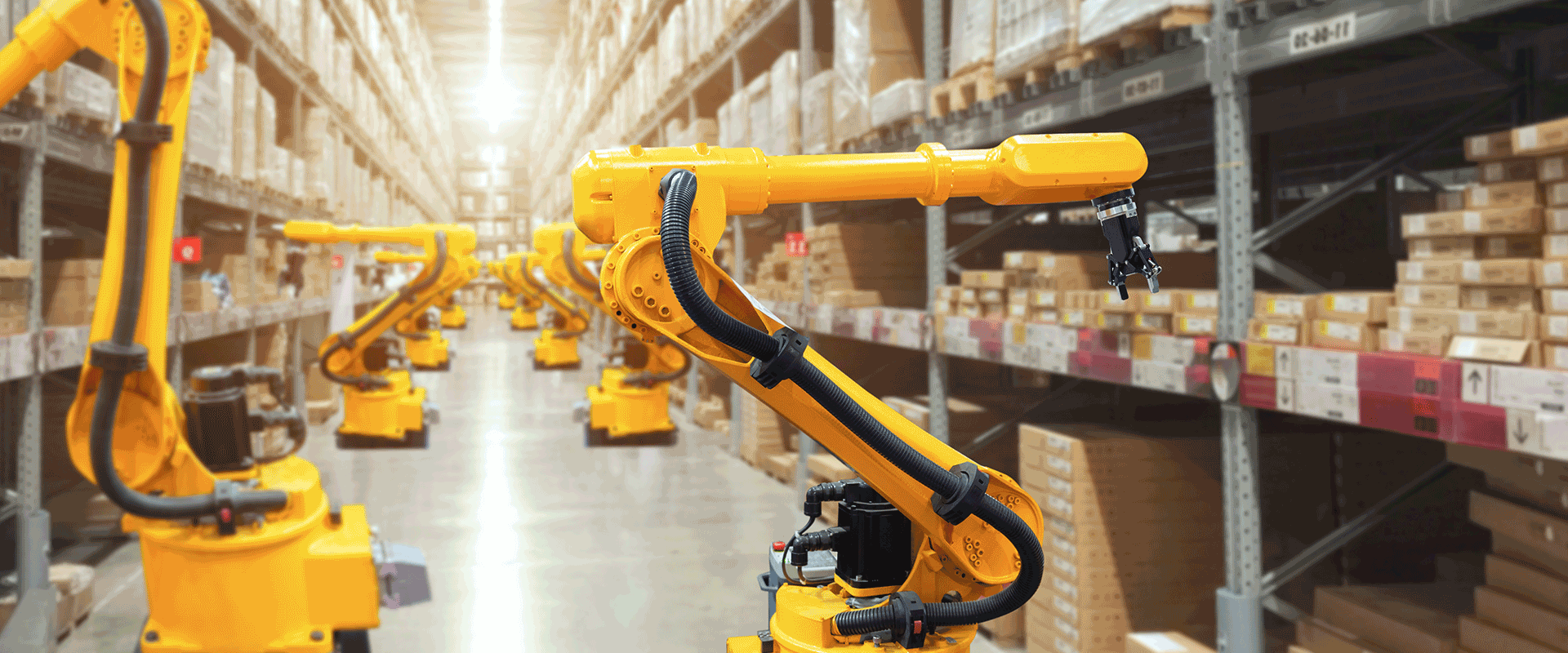
The Evolving Warehouse Automation Market and the Implications for Investors
- Volume XXII, Issue 75
- Executive Insights

Warehouses have historically been characterized by slow growth and limited use of technology; however, this dynamic has changed.
While overall macroeconomic conditions will remain challenging due to the COVID-19-driven recession, the pandemic provided an incremental uplift to ecommerce.
Growth in ecommerce creates pull-through demand for myriad industries including logistics, packaging, construction and, specifically, warehouse automation solutions.
The total warehouse automation market is expected to grow well in excess of GDP for the foreseeable future, so understanding the highest growth pockets is critical for both private equity investors and strategic buyers.
Few markets in history have seen such sustained double-digit growth as has ecommerce. There is little evidence that growth will be slowing soon, as entire traditionally brick-and-mortar sectors, such as grocers, continue to convert to online channels. Growth in ecommerce creates pull-through demand for a litany of industries including logistics, packaging, construction and, specifically, warehouse automation solutions.
In 2019, the value of the ecommerce market in the U.S. was $550 billion-$600 billion, with estimates of the market exceeding $1 trillion by 2024 and ample runway outside the forecast period.1 While overall macroeconomic conditions will remain challenging for the foreseeable future due to the COVID-19-driven recession, the pandemic has accelerated ecommerce penetration significantly and is now expected to result in a new normal, providing an incremental uplift to ecommerce (see Figure 1).
Warehouses have historically been characterized by slow growth and limited use of technology; however, this dynamic has changed. Understanding trends in warehouse automation, opportunities across both asset-light and asset-heavy investments, technologies (including both hardware and software), and the corresponding M&A landscape is critical for market participants. This includes both generalist and technology-focused private equity investors, as well as strategic buyers ranging from technology to more traditional industrial firms (see Figure 2).
Beyond ecommerce megatrends, the following are a variety of themes that render the warehouse automation market broadly attractive and can underpin an investment case:
Within the warehouse automation market, there are a variety of investment opportunities for private equity investors and strategic buyers seeking to capitalize on broader market trends and underlying ecommerce velocity. Understanding the intersections of these opportunities and developing a long-term investment thesis given market growth expectations are critical for investors looking to target the space.
Software and controls solutions vendors
There are several types of automation software used across warehouses (see Figure 4). A traditional tech stack in an automated warehouse leverages warehouse management software (WMS) for management of inbound products and order fulfillment and a warehouse control system (WCS) to manage automated picking, sorting and material handling equipment (MHE). Increasingly, warehouses are turning to warehouse execution systems (WES), which combine the functionality of WMS and a WCS into a single system with the aim of better orchestration across a facility’s MHE. While there are larger, integrated players within this space, specialized players still represent over 50% of the market. These specialized providers, especially those with advanced WES functionality and compatibility across the landscape of MHE vendors, are particularly attractive in our view.
MHE
There are six primary types of handling equipment used within automated warehouses: pick-and-put systems, conveyer systems, storage systems (e.g., ASRS), sortation systems, transportation systems (e.g., automated guided vehicles [AGVs]/autonomous mobile robots [AMRs]) and palletizing systems. An ASRS is typically a fixed robotics system, and these represent the majority of warehouse operator spend on robotics; however, AGVs are expected to represent the majority of spend within the next five years. The AGV market is characterized by both larger MHE vendors — that typically provide end-to-end solutions across MHE — and specialized point solutions vendors. While increasing penetration of level 3 and level 4 automation is expected to benefit players across all six equipment types, those market participants that can serve a broad spectrum of warehouse operators (e.g., mega warehouses in the outer ring, micro-fulfillment centers) are expected to be best positioned to benefit from market-driven tailwinds.
Integrators
Warehouse integrators sit at the intersection of software and MHE and design end-to-end systems to meet the needs of automated warehouse operators. They typically have experience working across and integrating a variety of MHE and WCS/WES offerings; a subset offers its own software solutions. Although the integrator landscape is not very consolidated, it is relatively more consolidated than other opportunities in warehouse automation, which may limit the attractiveness of the opportunity for potential investors considering roll-ups and/or bolt-ons within an integrator-focused strategy.
Storage systems and support structures
While a smaller market opportunity than MHE or integration, manufacturers in the storage system and support structure space have seen tremendous growth and financial performance. Potential products within this space include multilevel shelving as well as steel mezzanines and catwalks required to access shelving and maintain multilevel MHE equipment. These systems are of particular value in last-mile facilities, which utilize more vertical storage given the cost of incrementally larger warehouses (based on floor square footage) within urban environments. Manufacturers with the technical (and value-add) capabilities to design and build within these vertical facilities are expected to be advantaged relative to those that focus on larger, more traditional warehouse footprints.
Prior to the COVID-19 pandemic, the warehouse automation market was viewed as highly attractive and positioned for sustained growth driven by continued ecommerce penetration and an increasing shift to automation levels 3 and 4 by operators. Despite macroeconomic headwinds, these trends have largely accelerated and are now complemented by COVID-19-specific dynamics such as step changes in demand for online grocery fulfillment and increasing social distancing requirements in warehouses. While the total warehouse automation market is expected to grow well in excess of gross domestic product for the foreseeable future, understanding the highest growth pockets of the market (and targets within) is critical for both private equity investors and strategic buyers.
Endnote:
1Emarketer sales forecast; AB Bernstein sales forecast.
Editor's note: Additional coauthor
Jon Moss, Engagement Manager at L.E.K. Consulting